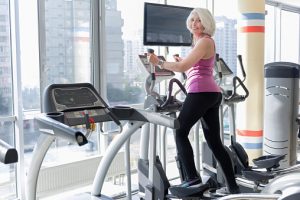 In our younger days, we were more adventurous, taking the path least traveled just to see where it led. We were more active, having the energy to stay up late with our friends and loved ones. While it is understandable that this level of activity can only be sustained in our youth, perhaps staying active means something different as we age—being more subdued yet not sedentary.
In our younger days, we were more adventurous, taking the path least traveled just to see where it led. We were more active, having the energy to stay up late with our friends and loved ones. While it is understandable that this level of activity can only be sustained in our youth, perhaps staying active means something different as we age—being more subdued yet not sedentary.
One of the simple facts of life is that as we age, we become more susceptible to health issues, with strokes being some of the most devastating, having an impact immediately and remaining present thereafter. Yet a new study has found that people who exercised regularly before their stroke had lowered the odds of disability after.
Advertisement
The benefits of physical actively translate to all aspects of life. The Centers for Disease Control and Prevention have gathered data on the positive effects that exercise provides, especially to seniors:
- Helps maintain the ability to live independently and reduces the risk of falling and fracturing bones
- Reduces the risk of dying from coronary heart disease and of developing high blood pressure, colon cancer, and diabetes
- Can help lower blood pressure
- Improves stamina and muscle strength
- Fosters improvements in mood and feelings of well-being
- Reduces symptoms of anxiety and depression
- Helps maintain healthy bones, muscles, and joints
- Helps control joint swelling and pain associated with arthritis
The study in question involved more than 18,000 people with no previous history of stroke and lasted for an average of 12 years. During this time, it was documented that nearly 1,400 of the participants suffered a stroke but survived. Three years after these individuals’ episodes of stroke, those who exercised regularly before the stroke were 18 percent more likely to be able to perform basic tasks such as bathing independently.
“Being physically inactive before stroke predicts a higher risk of being dependent both before and after stroke,” said study author Pamela Rist of Harvard University.
Researchers also saw that the more in shape and fit individuals were 16 percent more likely to be able to perform more complex tasks as well, such as managing money when compared to those who did not exercise before their stroke. Body fat was not an indicator, however, of predicting an individual’s level of disability after a stroke, which the researchers assessed by looking at participants BMI.
“[The research] provides additional evidence that regular exercise has health benefits that last into a person’s future, regardless of stroke,“ said Dr. Andrew Rogove. He directs stroke care at Northwell Health’s Southside Hospital in Bay Shore, N.Y.
“[This study] provides insight into the fact that doctors should emphasize to their patients not only weight-reduction strategies for stroke and possibly heart attack prevention but also the importance of leading a very active lifestyle to improve their chances of survival and recovery in case a stroke occurs,” said Dr. Ajay Misra, chair of neurosciences at NYU Winthrop Hospital in Mineola, N.Y.
Related: How to recover from a stroke quickly and naturally
